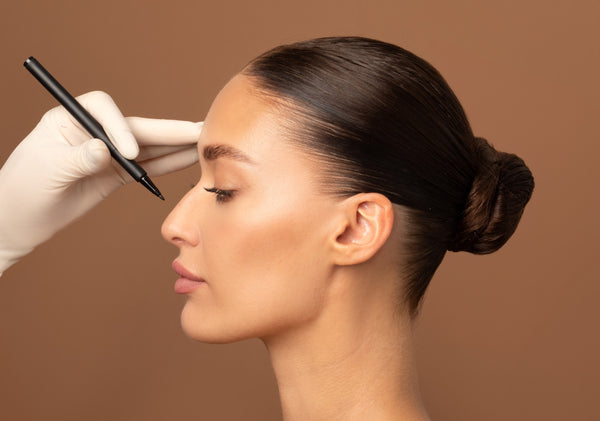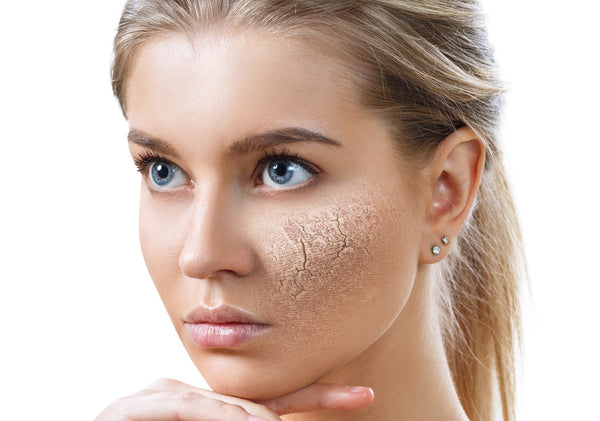Toning It Down: Is Toner Essential in Your Skincare Routine?

In the world of skincare, serums, moisturizers, and cleansers reign supreme. However, there's one humble yet often misunderstood player: facial toner.
Once known for its astringent properties, today's toners have evolved far beyond their predecessors. As skincare practices advance, it's only natural to wonder about skincare toner necessity.
At MD GLAM, we love peeling back the layers of different skincare. Despite their rocky reputation, toners can play a pivotal role in your daily regimen. The secret? Figuring out which ingredients and formulas your skin loves most.
Today, we’re taking a closer look at the power of toners in skincare regimens—from their roots and modern-day uses to how to find your right match and integrate it into your routine.
Toners and pH Balance: Evolution Throughout the Years
When they first burst onto the scene, toners were notorious for sucking every drop of moisture out of your skin. This is because they were chock-full of alcohol and harsh, dehydrating ingredients.
The idea? Remove any lingering residue or grime your cleanser left behind and rebalance your skin’s pH (potential for hydration).
Without getting into all the heavy science, pH refers to how acidic or alkaline your skin is. When your skin's pH is balanced, it looks and feels its best. However, if it's too acidic or too alkaline, it can trigger a host of skin problems like dryness, oiliness, and irritation.
Ironically, rather than actually toning your skin, toners of yesteryears were often WAY too astringent, stripping the skin of its natural oils and disrupting its delicate balance (rather than leveling it out).
So, why’d they make them this way? Simply put, skincare science just wasn't as advanced as it is today.
Back then, our understanding of skin physiology and its microbiome was still pretty basic. That’s why almost all skincare had a generalized, one-size-fits-all approach. In other words, different products for different skin types? That just wasn’t a thing.
All of this fueled the infamous misunderstanding of what toners are and how they’re supposed to work. Thankfully, modern skincare has come a long way since then.
The Role of Toners Today
As innovators in skincare, we’re proud to see the industry finally flipping the switch on how toners are seen. Today, they’ve gone from skincare villains to versatile heroes, boasting diverse perks for your complexion.
While toners were initially created to finish cleansing your skin, this isn’t the case anymore. Why? Because cleansers, like toners, have improved so much that they’ve eliminated that necessity.
Don’t get us wrong—toners and pH balance restoration are still a thing, but nowadays, there’s a toner for different skin types and every complexion concern imaginable.
So, how do toners benefit skin today? They can help with:
- Balancing skin pH
- Hydrating the skin
- Exfoliating the skin
- Pore and oil reduction
- Prepping for more skincare
- Soothing and calming
- Antioxidant protection
- Targeting skincare issues
Alright—toner myths? Debunked. Now, let’s see if it fits into your skincare routine essentials.
To Use Toner or Not in Skincare: Factors to Consider
As far as dermatologists go, the consensus on skincare toner necessity is pretty universal: it’s not a must, but it certainly doesn’t hurt. Most agree that toners are a customizable, optional step rather than a mandatory one for all.
Where does that leave you? It depends. The decision to make toner a part of your skincare routine essentials hinges on a few personal factors, like:
- Skin type: If you have oily or acne-prone skin, toners with ingredients like salicylic acid can help control oiliness and combat breakouts. For dry or sensitive skin, hydrating toners with soothing aloe vera or hyaluronic acid are more beneficial.
- Personal skin goals: What do you want your skincare to achieve? If you want more hydration or extra cleansing post-wash, a toner is a great aid in helping you reach those skincare goals.
- Ingredients and formulations: Alcohol-based toners can be drying, so they aren’t the best choice if you have dry skin. Conversely, if you have resilient skin, you might benefit from stronger ingredients.
- Skin concerns: Are you trying to tackle issues like acne, hyperpigmentation, or large pores? Different toners can help improve different concerns. For instance, brightening toners often have vitamin C or niacinamide to reduce hyperpigmentation, while formulas with AHAs or BHAs support acne and pore reduction.
- Climate and environment: Your environment plays a role, too. In drier climates, a hydrating toner can be a skin savior. If you live somewhere humid, it might be better to opt for a lighter formula or skip toner altogether.
- Lifestyle: Think about your daily routine and preferences. If you like a more skinimal approach or have especially reactive skin, toner might be unnecessary. However, if you savor an extensive skincare ritual, toners are a pleasant addition.
Ready to level up your skincare with facial toner? We’re here to make it an easy transition.
Choosing the Right Toner (or Alternatives to Toner)
Each toner is unique, but only a select few earn our approval.
Cue the drumroll, please.
Here are our specially-curated picks for toners for different skin types and goals:
- Normal skin: Young Goose Bio-C Peptide Spray - Hydrating and Toning Mist, $59.85
- Dry skin: SK-II PITERA Facial Treatment Clear Lotion, $80
- Oily skin: Hale & Hush Clear Future Toner, $34
- Combination skin: INSTYTUTUM Resurfacing Glow Toner, $72
- Acne-prone skin: DRMTLGY BHA Toner, $25
- Exfoliating: Paula’s Choice 2% BHA Liquid Exfoliant, $35
-
Anti-aging: Dermalogica Antioxidant Hydramist, $47
- Pore-reducing: Paula's Choice Pore-Reducing Toner, $24
- Hyperpigmentation: Ole Henriksen Glow2Oh Dark Spot Toner, $35
- Redness: Kiehl’s Calendula Herbal-Extract Alcohol-Free Toner, $75
- Splurge-worthy: Orveda Vital Sap Essence-Toner, $195
You can also try skin essences (like Orveda Respure Shield Beauty Mist, $85) or botanic-infused waters (like Lilfox Aphrodite Pure Rosewater Toning Mist, $70) as lighter alternatives to toner.
But facial toner alone isn’t enough. To reap all the benefits, you must complement it with the correct skincare and in the correct order.
How to Incorporate Toners in Skincare Regimen
After choosing the right toner, it’s time to put it to use.
- Start by washing your face with a gentle yet powerful pore-purifying face wash (like our Deep Pore Foaming Cleanser).
- With your face slightly damp, gently pat your toner all over. Feel free to use your hands or a cotton round.
- After your toner sinks into your skin, follow up with your favorite moisturizer. We love the DMAE Antioxidant Day Moisturizer for the mornings and Hyaluronic Acid Night C-Complex to maximize our beauty sleep.
- Stepping out for the day? Don’t forget your SPF. Settling in for a night of R & R? Give your skin extra attention with a targeted serum or DIY face massage.
And just like that—you’re officially in the toner club.
Set the Right Tone with MD GLAM
So, is skincare toner a necessity? Maybe not for everyone, but we’re proud to embrace an era where innovative, versatile toners take our skincare to new heights.
Long story short: toners have redeemed themselves. But unlocking their full potential means pairing them with the right products. Our go-to? Luxurious, medical-grade skincare that ups your beauty game with the power of surgeon-formulated products.








